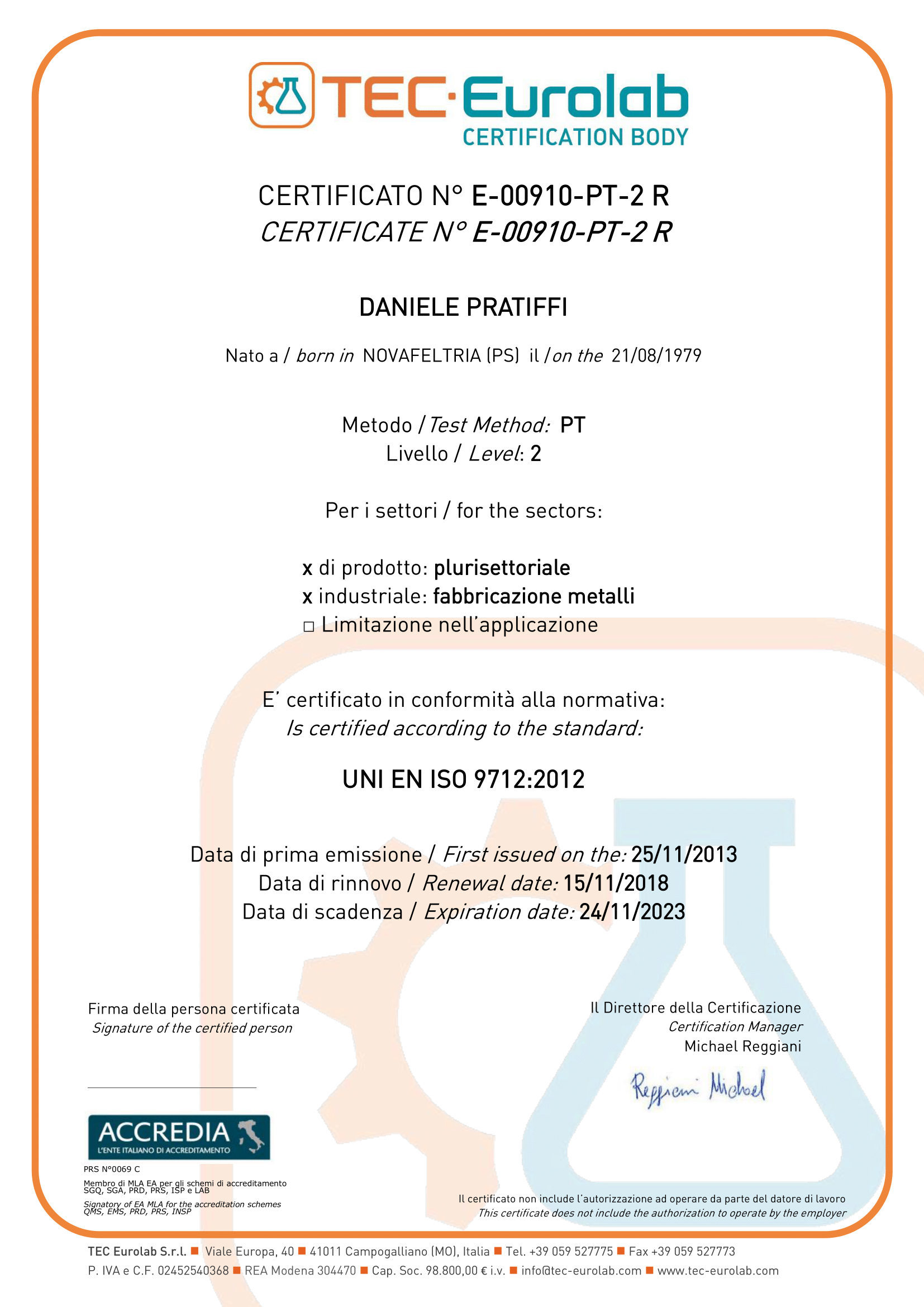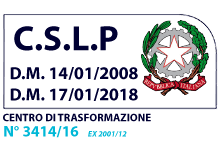UNI EN ISO 9712
Non destructive tests - Qualification and certification of non-destructive testing personnel.
In the field of industrial diagnostics, "superficial" non-destructive analysis methods take great interest in evaluating the structural integrity of particularly critical components and components in order to ensure their operational functionality, continuity of use and the degree of safety required for man and the environment. In the United States at the beginning of the 1970s, the American Society for Non Destructive Testing (ASNT) issued the first legislation on SNT-TC-1A for the qualification of non-destructive inspection personnel.
Subsequently, other countries have also issued national regulations that are substantially similar to American ones. In 1993, the European Standardization Committee (CEN) issued the European Standard EN 473 / ISO 9712, edited in Italy under UNI EN 473 / ISO 9712 "qualification and certification of non-destructive testing personnel. only the UNI EN ISO 9712: 2012 standard was issued.
In particular, both the DM 14/01/2008 (NTC) and the UNI EN ISO 1090 standard require the execution of the above checks to verify the integrity of the structure and / or the result of special processes such as welding, in particular reference to NTCs is mandatory 100% control of all VT-welded joints.
The standard subdivides non-destructive testing executives on three levels and defines the skills that can be summarized as follows:
Level I: Execution of control
A Level I certified person has demonstrated competence to perform non-destructive testing in accordance with written instructions under the supervision of certified staff at Level II or Level III.
With the purpose and skills defined in the certificate, Level 1 staff may be authorized by the employer to carry out the following operations in accordance with the PND instructions:
- set the NDT (Non Destructive Testing) equipment;
- test;
- result and classify test results in accordance with NDT instruction criteria;
- refer the result;
Level II: Interpretation of results and assessment of compliance with specifications, also Level II gives I level instruction statements that can only work with Level II statements.
A certified person Level II has demonstrated competence to perform non-destructive testing in accordance with a NDT procedure. With the purpose and skills defined in the certificate, Level II staff may be authorized by the employer to:
- select the NDT technique for the method used;
- define limitations in the application of the NDT method;
- translate NDT codes, standards, specifications and procedures in NDT instructions appropriate to the actual test conditions;
- set up and verify the CND tool settings;
- perform and monitor the NDT test;
- interpret and evaluate results in accordance with standards, codes, specifications, or procedures applied;
- implement and supervise all Level II or Level I activities;
- provide guidance to Level II or Level I staff; refer the result;
Level III: organization of the system of non-destructive checks, drafting of specifications and personnel training.
The subdivision in the three tiers applies to any method of non-destructive testing.
The UNI EN ISO 9712 standard also defines the procedures for certification in the three levels. Direct Access to Level II requires the sum of the hours scheduled for Level I and Level II
Table – minimum hours of training for Level I and Level II
| NDT Method | Level I | Level II |
| AT | 40 | 64 |
| ET | 40 | 48 |
| LT – B Pressure method | 24 | 32 |
| LT . C Tracer gas method | 24 | 40 |
| MT | 16 | 24 |
| PT | 16 | 24 |
| ST | 16 | 24 |
| TT | 40 | 80 |
| RT | 40 | 80 |
| UT | 40 | 80 |
| VT | 16 | 24 |
*Note for RT, training hours do not include radiation safety training
Table– Industrial experience
| NDT Method | Experience in Month | |
| Level I | level II | |
| AT, ET, LT, RT, UT, TT | 3 | 9 |
| MT, PT, ST, VT | 1 | 3 |
Non-destructive testing of surface and volumetric properties applicable to welds is defined by UNI EN ISO 17635.









